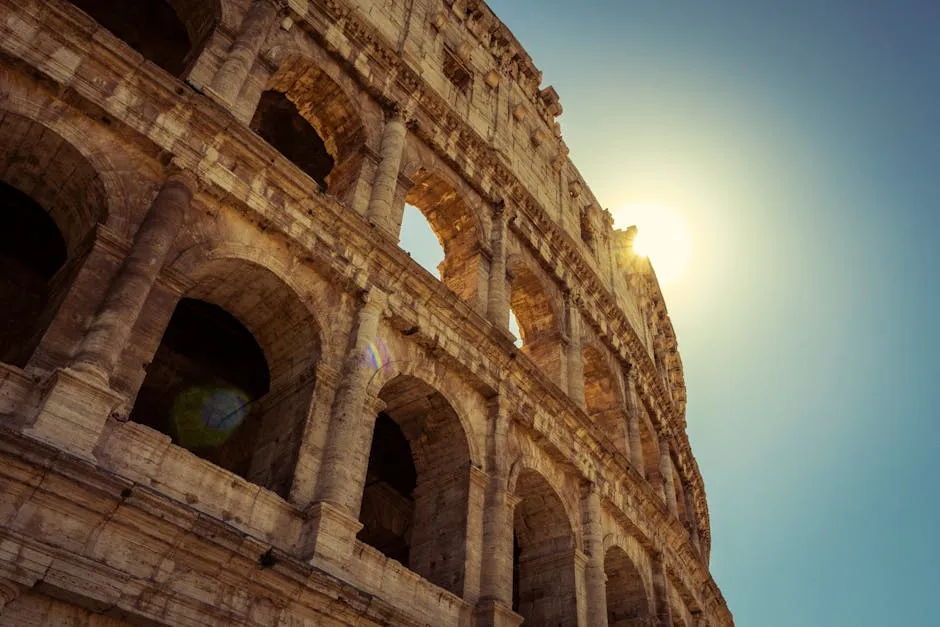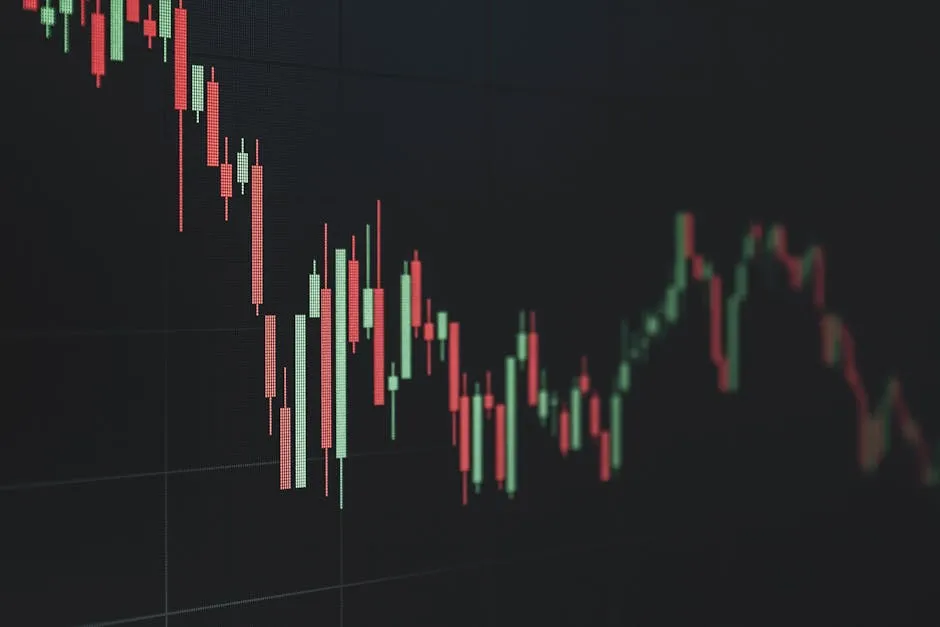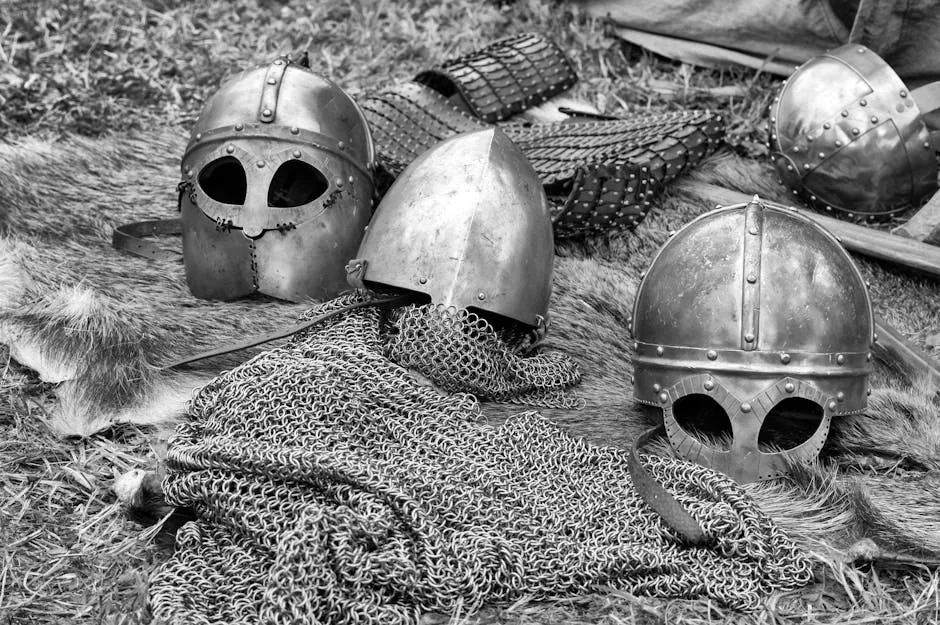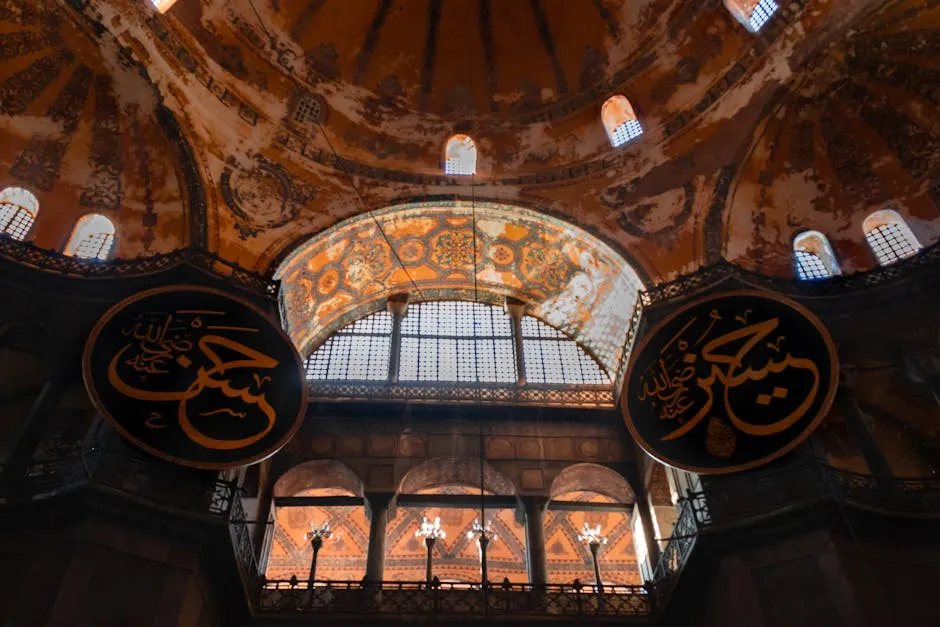
Why Did Rome Fall? An In-Depth Exploration of Factors Behind the Decline of the Roman Empire
Introduction
The fall of the Roman Empire remains a captivating topic. Many factors contributed to this decline, making it a complex issue. In this section, we’ll explore both internal and external elements that played a role in Rome’s downfall.
Now, if you’re itching to dive deeper into the fascinating history of Rome, consider picking up The History of the Decline and Fall of the Roman Empire by Edward Gibbon. This classic work will give you a front-row seat to the intricate tapestry of events leading to Rome’s epic fall.
Summary and Overview
The Roman Empire was a monumental force in history, stretching across Europe, North Africa, and parts of Asia. Established in 27 BCE, it marked significant advancements in governance, culture, and engineering. However, its decline began with key events like the division into Eastern and Western empires, initiated by Emperor Diocletian in 285 CE. The Western Empire faced invasions from Germanic tribes, notably the Visigoths, who famously sacked Rome in 410 CE. This period saw various perspectives regarding the timeline of Rome’s fall, with some historians pinpointing 476 CE as the official end when the last emperor, Romulus Augustulus, was deposed. Others argue that the decline was gradual and multifaceted, reflecting a mix of political, economic, and social issues.
If you’re curious about different perspectives on Rome’s history, check out SPQR: A History of Ancient Rome by Mary Beard. Beard’s witty prose and keen insights make it a delightful read!
Historical Context and Significance
The Rise and Expansion of the Roman Empire
Rome’s journey began as a small city-state on the Italian Peninsula. The early Republic laid the groundwork for expansion through military conquests and alliances. Key figures, such as Julius Caesar and Augustus, propelled Rome into greatness. By the 2nd century CE, the empire reached its peak, encompassing territories from Britain to the Middle East. The Pax Romana, a period of relative peace, allowed trade and culture to flourish. However, this expansion created administrative challenges. The vast empire became difficult to govern effectively. Internal strife and corruption began to surface, signaling the start of a gradual decline. The empire’s complexities foreshadowed the challenges that would ultimately contribute to its fall.
Want to understand Rome’s military might? Grab a copy of The Complete Roman Army by Adrian Goldsworthy. This detailed account sheds light on the military structure that helped Rome expand its empire.
The Division of the Empire
The Roman Empire split into East and West for several reasons. One key factor was the sheer size of the empire. Managing vast territories became increasingly difficult. Emperor Diocletian recognized this challenge and formally divided the empire in 285 CE. This division aimed to improve administration and defense.
The implications of this split were significant. Each half developed its own governance, which led to divergent political and economic paths. The Eastern Empire, centered in Constantinople, enjoyed more stability and wealth. Meanwhile, the Western Empire faced mounting pressures, including invasions and economic decline. Without a united front, military strategies faltered. This fragmentation weakened Rome’s ability to respond to external threats, setting the stage for further decline.

Internal Factors Contributing to the Fall
Economic Decline
Economic troubles plagued the Roman Empire, significantly contributing to its downfall. Inflation soared as the government overproduced coins with less silver. This made money worth less and led to rising prices. The reliance on slave labor also created a stagnant economy. As expansion slowed, the supply of new slaves diminished, leading to labor shortages.
Taxation became a heavy burden, especially for the lower classes. Wealthy citizens often evaded taxes, leaving the state struggling to collect sufficient revenue. Trade deficits further complicated matters, as the empire imported more than it exported. With a weakened economy, public services deteriorated, and agricultural production plummeted. These issues eroded the empire’s foundation, making it vulnerable to external pressures.

If you’re looking for a concise overview of Rome’s economic history, consider The Roman Empire: A Very Short Introduction by Christopher Kelly. It’s a quick read that packs a punch!
Political Corruption and Instability
Political corruption and instability played a crucial role in Rome’s decline. The empire experienced a series of ineffective leaders, often rising through violence or treachery. This power vacuum created chaos, as multiple factions vied for control. The Praetorian Guard, tasked with protecting emperors, frequently intervened in politics, assassinating rulers at will.
As corruption spread, civic pride diminished. Citizens lost faith in their leaders, leading to disillusionment. The Senate, once a powerful governing body, became ineffective and filled with self-serving individuals. This erosion of political integrity made it difficult to address the empire’s mounting challenges, further accelerating its decline.

For a deep dive into the political dynamics of Rome, you might want to check out The Twelve Caesars by Suetonius. This book offers a colorful portrait of the emperors who shaped Rome’s destiny.
Decline of Military Power
The Roman legions once stood as the backbone of the Empire. However, over time, their effectiveness weakened significantly. With fewer Roman citizens willing to enlist, emperors turned to hiring mercenaries. These soldiers, often foreign and loyal to their paymasters rather than Rome, posed a risk. Their shifting allegiances made the military unreliable and fragmented.
Military defeats compounded these issues. Notable battles, such as the catastrophic loss at the Battle of Adrianople in 378 AD, showcased the decline in Roman military prowess. This defeat against the Goths severely undermined confidence in the legions. As Rome faced increasing threats from outside forces, the inability to field a loyal and effective army accelerated the Empire’s decline. The loss of military power left Rome vulnerable, marking a significant step toward its eventual fall.

To understand the military strategies of Rome, check out The Fall of the Roman Empire: A New History of Rome and the Barbarians by Peter Heather. It’s an enlightening read that sheds light on the military aspects of Rome’s decline.
Social Changes and Loss of Civic Virtue
As the Roman Empire evolved, so did its social values. Christianity’s rise played a crucial role in this transformation. Once a persecuted faith, it gained prominence, ultimately becoming the official religion of the Empire. This shift altered societal norms and diminished traditional Roman civic pride.
The emphasis on faith over state loyalty weakened the sense of duty among citizens. The values that once united Romans began to fragment. Civic virtue, once the pride of Rome, faded as people sought identity within their religious affiliations rather than their empire. Consequently, this loss of civic engagement contributed to a decline in public morale and trust in leadership. As the foundations of Roman society eroded, the Empire became more susceptible to external pressures.

For a captivating exploration of Roman myths and legends, consider Roman Mythology: A Captivating Guide to Roman Myths and Legends by Captivating History. It’s a fantastic way to delve into the cultural narratives that shaped Roman identity.
External Factors Contributing to the Fall
Barbarian Invasions
The invasions by various barbarian tribes marked a turning point in the Roman Empire’s fate. Groups such as the Visigoths and Vandals pressed against the borders, seeking new territories. The situation escalated dramatically when the Visigoths, led by King Alaric, sacked Rome in 410 AD. This event shocked the Empire and symbolized its vulnerability.
Following the sack, Rome faced relentless pressure from invading forces. The Vandals captured Carthage and continued to raid the Mediterranean, further destabilizing the region. These invasions strained the Empire’s resources and military capabilities. By 476 AD, the Western Roman Empire had become a shadow of its former self, ultimately leading to the deposition of the last emperor, Romulus Augustulus. The relentless onslaught of barbarian tribes played a significant role in the collapse of Roman authority in the West.

For a thorough examination of the impact of these invasions, you should read The Fall of Rome: And the End of Civilization by Bryan Ward-Perkins. It provides a gripping narrative of the events that led to Rome’s demise.
Climatic and Environmental Factors
Climate change and diseases significantly impacted the Roman Empire. Historical records indicate a decline in agricultural productivity during the late Roman Empire. Shifting weather patterns led to cooler and wetter conditions, which disrupted crop yields. For instance, the “Late Antique Little Ice Age” around 536-545 CE caused widespread famine.
Additionally, disease outbreaks weakened the population. The Plague of Justinian, which began in 541 CE, resulted in millions of deaths across the Mediterranean. Archaeological findings suggest that urban centers experienced a sharp decline in population, contributing to labor shortages and reduced economic activity.
Studies estimate that the population of Rome fell from over a million to around 500,000 by the 7th century. This demographic shift strained the Empire’s ability to maintain agricultural production and military strength. As resources dwindled, the Empire faced increased vulnerability to invasions and internal strife. The combination of climate change and disease played a crucial role in hastening Rome’s decline, showing how environmental factors can shape historical outcomes.

If you’re interested in learning more about the environmental impacts on Rome, you might find Roman Britain: A New History by Guy de la Bédoyère to be quite enlightening. It highlights how environmental changes influenced Roman territories.
The Legacy of the Fall of Rome
Transformation into the Byzantine Empire
After the fall of the Western Roman Empire in 476 CE, the Eastern Roman Empire continued as the Byzantine Empire. This transition marked a shift in power and culture, as Constantinople became the new center of authority. The Byzantines preserved Roman law and governance, maintaining continuity in administration.
The Byzantine Empire thrived for nearly a thousand years, influencing art, architecture, and trade across Europe and Asia. Its resilience laid the groundwork for future European states. The fall of the Western Empire created a power vacuum, allowing the Byzantine Empire to flourish.

This division also shaped the future of Europe. As local kingdoms emerged after the fall, their interactions with the Byzantine Empire fostered cultural exchanges. The legacy of Roman governance and culture continued to influence these new kingdoms, ultimately shaping the trajectory of European history.
For a comprehensive account of this transition, consider reading The Roman Empire: A History in 12 Buildings by Philip Wilkinson. It showcases how architecture reflects the Empire’s evolution over time.
Cultural and Historical Impact
The fall of Rome had profound effects on European history, culture, and governance. The collapse ushered in the Middle Ages, a period marked by feudalism and localized power structures. Roman law became a foundation for many legal systems in Europe, influencing concepts of justice and citizenship.
Infrastructure developments, such as roads, aqueducts, and urban planning, left a lasting mark on European cities. These innovations facilitated trade and communication, connecting distant regions. The spread of Christianity, which gained prominence during and after Rome’s decline, reshaped cultural and religious landscapes.
Furthermore, the Roman legacy inspired Renaissance thinkers, who revived classical ideas and knowledge. This intellectual revival helped shape modern Western civilization, illustrating the enduring impact of Rome despite its fall. Ultimately, the collapse of the Roman Empire set in motion a series of transformations that would define Europe for centuries to come.

If you’re eager to explore the Renaissance’s links to Rome, check out Roman Art: A Very Short Introduction by James Hall. It dives into the artistic legacy that continued long after the Empire’s fall.
Conclusion
The fall of the Roman Empire was a multi-layered event. Key factors included economic troubles, political corruption, and military decline. Invasions by barbarian tribes further exacerbated these issues. The division of the empire also played a significant role, leading to differing paths for the Eastern and Western halves. This complexity teaches us about how societies can decline under various pressures. Understanding these elements helps us reflect on the nature of historical decline and its lasting implications for future civilizations.
FAQs
What year did the Western Roman Empire fall?
The Western Roman Empire officially fell in 476 AD. This year marks the deposition of Romulus Augustulus, the last Roman emperor in the West. His removal by the Germanic leader Odoacer is often viewed as the symbolic end of Roman authority in the western territories. This event created a power vacuum, leading to the rise of local kingdoms and the eventual establishment of medieval Europe.
What were the main causes of the fall of Rome?
The fall of Rome stemmed from a mix of internal and external factors. Internally, political corruption, economic decline, and military inefficiency weakened the empire. Externally, invasions by various barbarian tribes, such as the Visigoths and Vandals, put immense pressure on Roman defenses. Additionally, social changes, including the rise of Christianity, shifted values and priorities, further complicating the empire’s stability.
Did the Eastern Roman Empire also fall?
Yes, the Eastern Roman Empire, known as the Byzantine Empire, eventually fell as well. While it survived the collapse of the Western Empire, it faced significant challenges over the centuries. The Byzantines maintained continuity for nearly a thousand years until 1453, when Constantinople fell to the Ottoman Turks. This marked the end of Roman authority in the East but not the complete disappearance of Roman cultural influence.
How did Christianity contribute to the fall of Rome?
Christianity played a significant role in shaping the values and governance of the Roman Empire. As the religion gained prominence, it shifted focus away from the state and its traditional practices. The rise of Christian leaders diminished the political power of emperors, leading to a loss of civic virtue. Although some argue this shift weakened Rome, it’s essential to view it as one factor among many contributing to the empire’s decline.
What lessons can modern societies learn from the fall of Rome?
Modern societies can learn valuable lessons from Rome’s decline. A stable government is crucial for societal health. Relying heavily on military force can lead to vulnerabilities, especially if the loyalty of troops wanes. Additionally, economic stability is vital; unchecked corruption and inequality can erode public trust. Understanding these themes can help contemporary societies avoid similar pitfalls.
How did the invasions of barbarian tribes affect Rome?
Barbarian invasions were a significant factor in the fall of Rome. Groups such as the Visigoths and Vandals breached Roman defenses, leading to the sack of Rome in 410 AD and later in 455 AD. These invasions drained resources and morale, exposing the weaknesses of the Roman military. Constant pressure from these external forces contributed to the empire’s inability to maintain control over its vast territories.
What was the significance of the fall of Rome for European history?
The fall of Rome marked a pivotal turning point in European history. It led to the fragmentation of power and the rise of local kingdoms, setting the stage for the Middle Ages. This period saw the evolution of feudalism and the spread of Christianity, which would shape the continent’s cultural and political landscape. The legacy of Rome continued to influence European development long after its fall, particularly in law, governance, and infrastructure.
Please let us know what you think about our content by leaving a comment down below!
Understanding the reasons behind procrastination can provide insights into human behavior. why do people procrastinate
Thank you for reading till here 🙂
All images from Pexels




